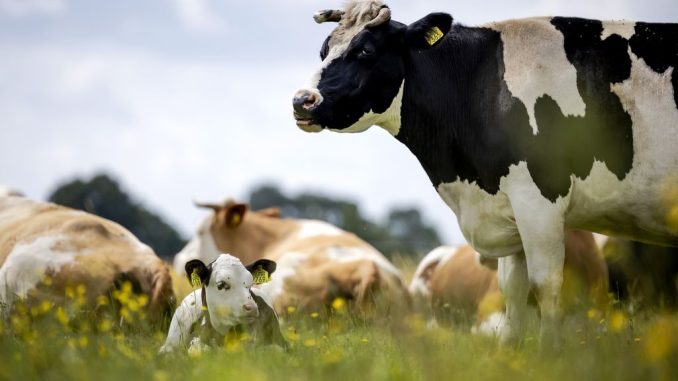
Organic agriculture is growing in Europe, but the Netherlands is lagging behind
About 4 percent of Dutch agriculture is organic, which has put the Netherlands at the bottom of the European Union for several years. This is evident from new figures from Eurostat published today.
These figures also show that the Netherlands is lagging behind: while many EU member states are making progress towards the joint goal for 2030 to have a quarter of agriculture organic, growth in the Netherlands has actually stagnated.
For the Netherlands, this joint ambition has a lower target: 15 percent. But that is still a significant gap to close in six years.
To find out why the Netherlands is lagging behind, NOS spoke to various researchers. They cite a passive government and reluctant lending by banks as obstacles: switching farmers have a difficult starting phase.
Investments are required in that phase, while farms only receive the organic designation two years after the conversion and thus a higher price for their products. This quality mark is owned by the government, but according to the researchers it is hardly promoted.
But the main driver behind organic food production is demand. “Everything depends on a sufficient market,” says market researcher Katja Logatcheva of Wageningen University & Research (WUR). “That is now a major obstacle in the Netherlands.”
According to Logatcheva, consumers pay attention to a number of things, from price and taste, to health and sustainability. Because the price of organic products is somewhat higher, these other things must be valued extra. Information provision also plays a role there, according to the market researcher.
Biodiversity, climate and nitrogen
Organic farming has advantages with regard to sustainability. For example in arable farming, says WUR researcher Wijnand Sukkel. He explains that organic farms have approximately 25 percent higher biodiversity. “This may be due to, among other things, better soil quality.”
There are both advantages and disadvantages to organic farming for the climate. By not using artificial fertilizer, emissions of the greenhouse gas nitrous oxide are significantly lower. But due to additional mechanical weed control, CO2 emissions are higher again.
There are also advantages and disadvantages when it comes to nitrogen, says livestock farming expert Gerard Migchels. Organic dairy farmers let cows graze in the meadow more often, which means that urine and feces mix less and therefore less ammonia is formed. Organic dairy cows also receive less (imported) concentrates, which is the main source of the Dutch nitrogen surplus. At the same time, a large part of the environmental benefit is canceled out by lower productivity.
“All in all, the Dutch consumer does not have a good idea of what the organic quality mark actually means,” says Sybrand Bouma, chairman of De Natuurweide, an association of organic dairy farmers. “It is also unclear to consumers what benefits it offers them.”
Health
These benefits include health benefits. Being scientists increasing concern about health damage by exposure to a cocktail of low doses of pesticides. “We ingest them through inhalation, skin contact and food,” says Parkinson’s researcher Bas Bloem of Radboud university medical center.
Bloem: “If you only eat organic products, your exposure should be lower. But because there are multiple sources and exposure occurs over a lifetime, these health benefits are difficult to investigate.”
Out research from Wageningen University & Research shows that a large number of pesticides are found in the blood and feces of farmers and local residents. These concentrations are considerably lower among organic farmers.
In addition to pesticides, organic products also have a slightly different nutritional value, says WUR researcher Wijnand Sukkel. “Organic fruits and vegetables generally have higher levels of antioxidants and vitamin C, and less cadmium.” That is one of the heavy metals that are harmful to health. “But here too it has not been proven that structural organic food leads to better health.”
Organic floriculture is on the rise, but is not suitable for all flowers
In order to boost our own organic farming, according to livestock farming expert Migchels, it is important that large supermarket chains change tack. “If Jumbo and Albert Heijn choose to make their own brands organic, just like Plus, things can happen very quickly. The costs will then drop considerably, resulting in a lower surcharge on the shelf.”
Until then, the growing backlog is a threat to Dutch organic farmers. Due to lagging domestic demand, part of their production goes to neighboring countries. That sales is also uncertain, now that organic production is growing faster in the rest of Europe.

Be the first to comment